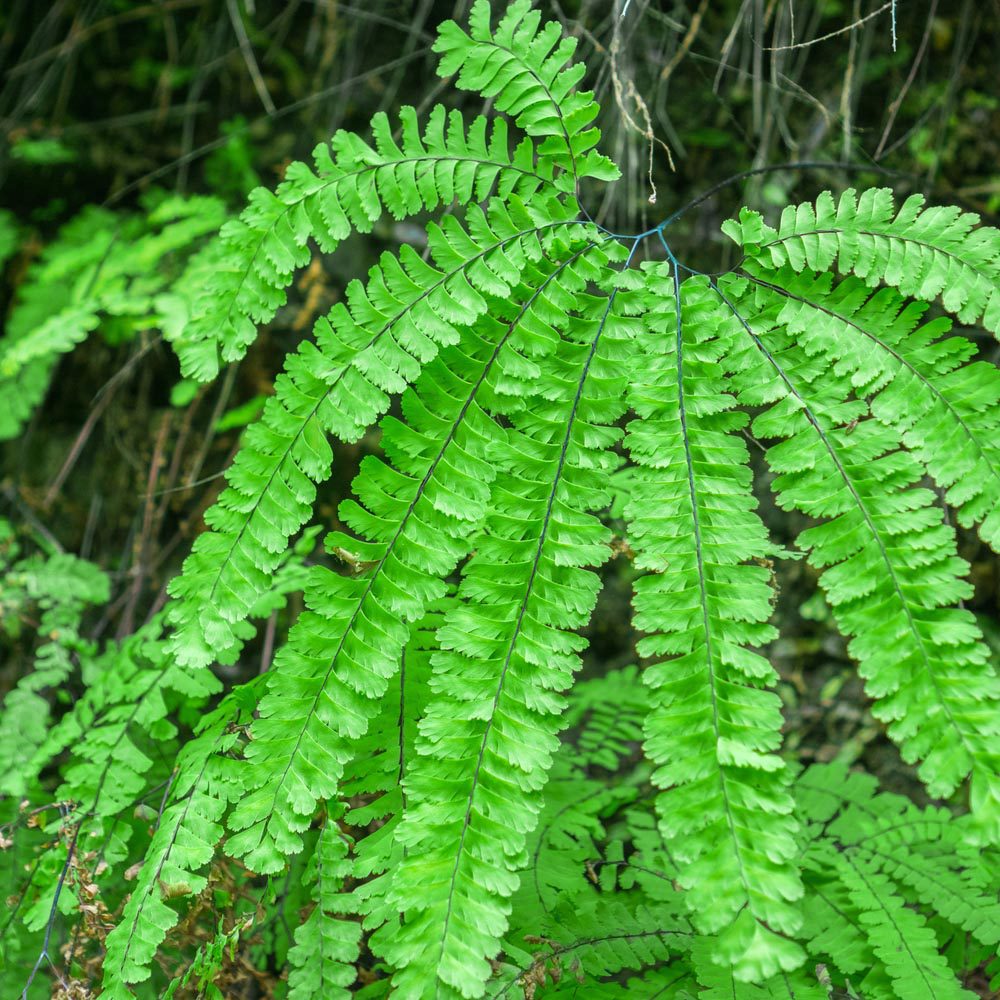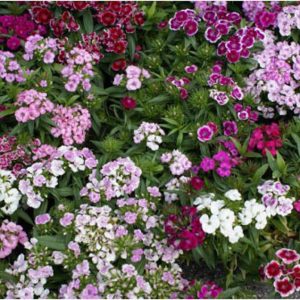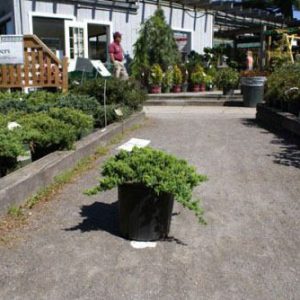Description
Adiantum aleuticum – Adiantum pendatum aleuticum – Five-finger Maidenhair Fern – Western Maidenhair fern – This species from Western North America grows 30” inches tall and in breadth and is semi evergreen to deciduous. Sends out short rhizomes and broadly egg shape to kidney-shape pendent pale to mid green on fronds 8-12” long with oblong segments and black stalks and midribs. New fronds may be tinged pink when very young.
Zones 3-8
Adiantum – Maidenhair Fern
There’s about 250 species of evergreen, semi evergreen, and deciduous ferns in this genus. Native to wide area of the tropics and subtropical areas of North and South America and some from Europe, Asia, Australia and northern North America. They grow in the edges of woodlands and shady crevices in rocks or at streamsides. Some prefer deeper shaded areas. The fronds or stems, that bear leaflets arranged alternately or in opposite pairs along a common stem. The leaflets can be oblong, triangular, or diamond shape. The stalks shinny black or deep purple-red often numerous from one clump. The new foliage may be pinkish or tinted bronze usually a paler green is more common. They spread by rhizomes a stem that creeps either above or below ground that takes root and start to produce top growth. Some do and do not divide well. The seed spores appear as tiny indentations under the leaves.
A popular indoors plant especially in the bathroom as hanging plants. They like strong indirect sunlight and high humidity. Grow in medium grade bark charcoal with limestone chips that’s humus rich that’s 2 parts sand and 3 parts leaf mold. Apply half strength balanced liquid fertilizer during growing season monthly. Plant in oversize container. They do not like a dry atmosphere and to much wetness. Remove old fronds as needed.
In outdoor situations grow hardy species in moist well-drained moderately fertile soil in partial shade.
Prone to scale insects, leaf spots. Fungal root rots are rare.





